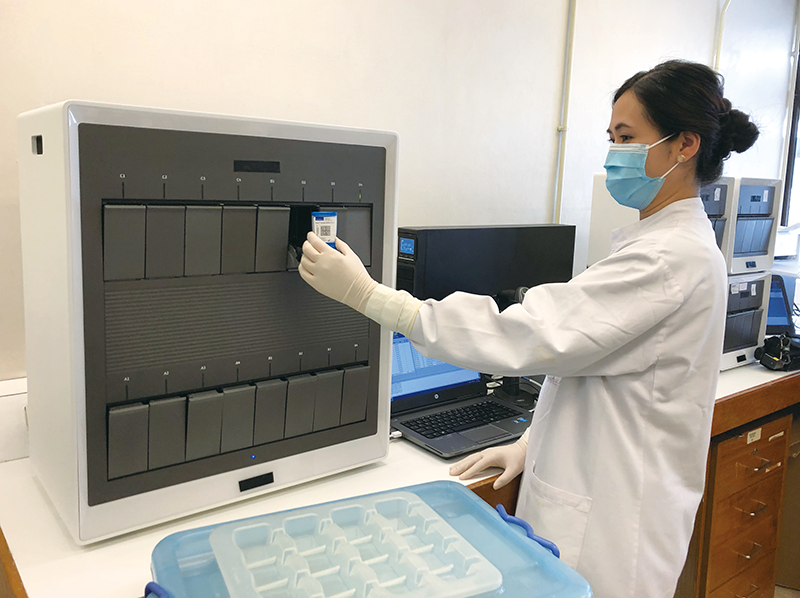Behind the tests: development of test kit in a week
On 12 January, the National Health Commission has released the genome sequence of SARS-CoV-2, providing the scientific communities with the key to virus vulnerability.
Dr Jonathan Chen, Scientific Officer-in-charge of Department of Microbiology at Queen Mary Hospital, mentions that the viral genome assisted the development of test kits. “As the pandemic began to grow, we worked with the Department of Microbiology of The University of Hong Kong to identify the unique genome features of the virus. In just one week, we developed a rapid test with high sensitivity and specificity, providing rapid and accurate test results. In this regard, patients can receive suitable treatment as soon as possible and thus reduce the risk of local transmission.” The team also discovered that deep throat saliva collection is a comparatively safe and convenient specimen that helps prevent our healthcare professionals from infection.
In a bid to facilitate early diagnosis, the HA laboratories have been operating round the clock in the past few months, with testing rounds increased from twice a day to six or seven rounds a day. At the same time, 10 microbiology laboratories have introduced a new rapid nucleic acid amplification test (NAAT) in late April. It greatly shortens the test-running time to 45 minutes, when compared to three to four hours conventional detection platform.
COVID-19 wreaks havoc across the world
Changes in the landscape of care
An uphill battle

